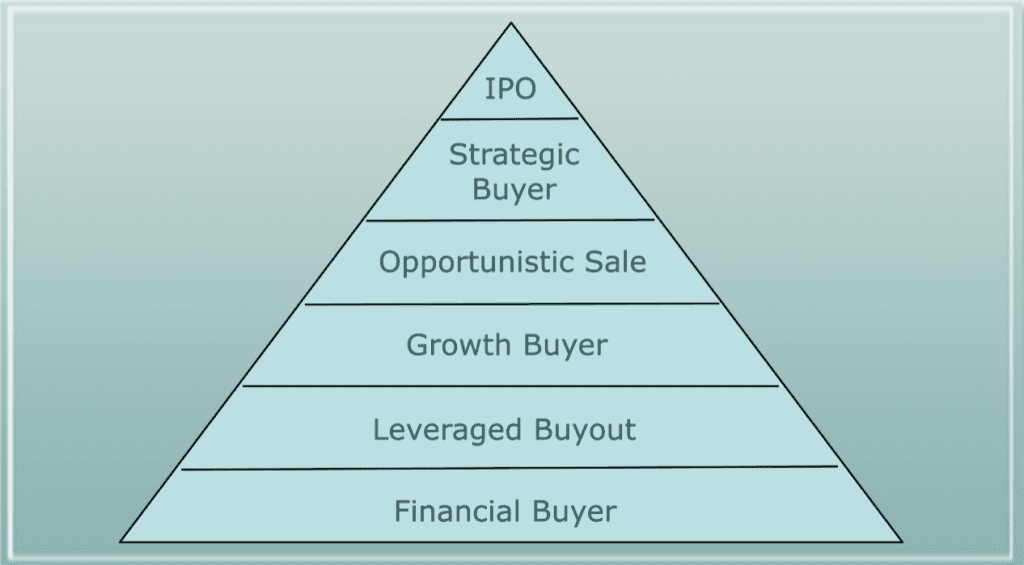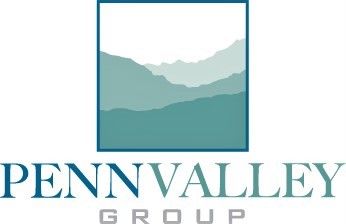Once a business has operated for a number of years, it makes more sense to develop and maintain an exit strategy plan than a business plan…
The main goal of any exit strategy plan is to maximize value in the business/asset that’s been built.
- Business plans get you into business and keep you on track in the early years
- Exit plans get the business into the most valuable operating posture
- Should the opportunity arise, a company operating under a proper exit plan will garner a much higher value upon sale or major disposition of the business
The following are usually included in any exit strategy plan:
- Timeline to exit
- Value drivers
- Exit mechanism
- Acceptable deal structures
- Universe of potential buyers
- Modeling the business for exit
- Actionable initiatives based on timeline
- Expected valuation
The timeline to exit is usually expressed as a range and will determine what options are actionable.
- Short or no timeline
- Actionable options – limited to selling what is in place, with some minor modifications
- One year to sale
- Actionable options – restructuring and/or right-sizing the organization
- Develop a modified reporting structure
- Actionable options – restructuring and/or right-sizing the organization
- Years to sale
- Actionable options – Identify and prioritize initiatives
- Value the individual initiatives and their potential impact on the exit strategy
- Actionable options – Identify and prioritize initiatives
Owners must understand and embrace those aspects of the business most valued by buyers.
The list of value drivers include the following:
- Earnings
- Growth
- Recurring revenue
- Customer base – breadth and depth
- Revenues under contract
- Balance sheet
The Value Pyramid seeks to identify exit mechanisms in a hierarchy of probable $ outcomes.

Typical deal structure components include:
- Cash
- Stock
- Seller’s Note
- Earn-out
- Employment/consulting agreement
The Penn Valley database has about 200 potential buyers in the Converged Networking segment that include:
- Private Equity backed buyers
- Growth buyers
- Financial buyers
- Opportunistic buyers
Managing to the upward sloping earnings line:
- Right-sizing the business
- By line of business
- By geography
- Increase revenue/gross margin
- Decrease operating costs
Right-sizing the business
- Identify the General and Administrative expense structure that will support current business volumes
- Staffing levels to be adjusted according to business volumes, taking technical certifications into consideration
- Can be accomplished through an analysis of historical financials
- Translates into an optimal earnings model
- At the end of the day, its about earnings
Establish an acceptable valuation goal
- Goal should be owned by all stakeholders
- Goal should be realistic and achievable within agreed upon timeline
- Goal should assume most conservative exit mechanism
- Financial buyer – lowest multiple
- Assume a minimum earnings levels
- Combine to establish baseline valuation on buyout
Actionable initiatives should be defined by their contribution to gross margin within the specified timeline
- Define initiatives around existing strengths of the company
- Define initiatives based on gross margin and value drivers
- This exercise usually yields many potential initiatives that would contribute to the valuation goal
Actionable Initiatives
- Reduce costs
- Every $ reduction in G&A translates into $4 to $6.5 upon exit
- Increase sales
- Every $ increase in gross margin translates into $4 to $6.5 upon exit (assuming no change in G&A expense)
- Acquisition options
- Should not be ignored
- Can be used to bolster earnings in a highly leveraged way
Acquisition initiatives
- Can be significant contributor to sales/gross margin
- Consideration to geographic and product/service offerings
- Consideration to cumulative addition to EBITDA
- Example:
- $10M in sales
- $3.5M in gross margin
- $2.9M in G&A
- $600K in net income
- Potential to contribute up to $3.5M in EBITDA
- Potential contribution to valuation up to $18M
- Timeline and valuation expectations will drive strategy
- All stakeholders should be bought in
- Actionable initiatives (prioritized) will drive valuation
- Value Drivers should play a role in any exit strategy
- Acquisitions can be a powerful, low risk way to ratchet up earnings and valuation
- An opportunistic buyer can trump all
